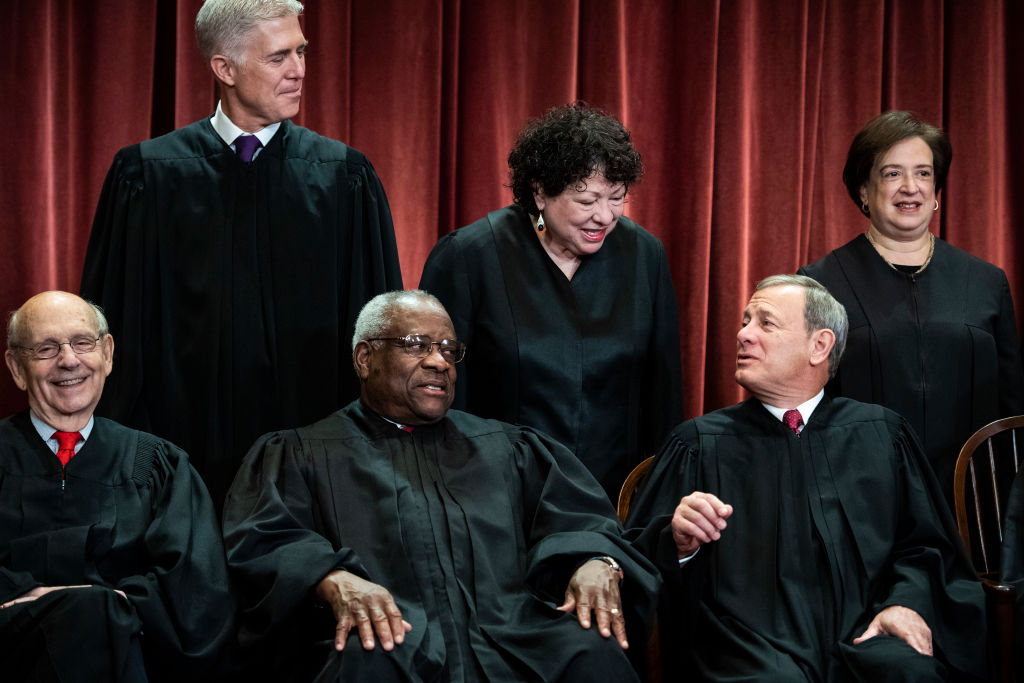Supreme Court Justice Clarence Thomas wants a do-over on his 2005 decision in a case that had a major impact on the power of federal agencies and regulation of the broadband industry.
In National Cable & Telecommunications Association v. Brand X Internet Services, better known as Brand X, Thomas wrote the 6-3 majority opinion that upheld a Federal Communications Commission decision to classify cable broadband as an information service. But in a dissent on a new case, released Monday, Thomas wrote that he got Brand X wrong. Thomas regrets that Brand X gave federal agencies extensive power to interpret US law, a power generally reserved for judges.
"Regrettably, Brand X has taken this Court to the precipice of administrative absolutism," Thomas wrote. "Under its rule of deference, agencies are free to invent new (purported) interpretations of statutes and then require courts to reject their own prior interpretations."
The impact of Brand X
In Brand X, the Supreme Court upheld a Bush-era FCC decision that classified cable broadband as an information service instead of a telecommunications service, which meant that cable Internet providers would not be regulated as common carriers under Title II of the Communications Act. But the Supreme Court ruling in Brand X didn't lock the FCC into classifying cable as an information service forever. Instead, Brand X allowed the FCC to classify Internet service as either an information service or telecommunications as long as it provided a reasonable justification. This allowed the FCC to subsequently change its classification decision multiple times. Under US communications law, telecommunications is defined as "the transmission, between or among points specified by the user, of information of the user's choosing, without change in the form or content of the information as sent and received." It's up to the FCC to decide whether that definition accurately describes broadband, and Republican and Democratic administrations have come to opposite conclusions. The Obama-era FCC in February 2015 decided that both home and mobile broadband services were telecommunications, and it regulated the industries under Title II in order to impose net neutrality rules. The Trump-era FCC reversed that decision in December 2017, deciding that broadband isn't telecommunications, and thus deregulated the industry. In each case, the FCC decision was appealed and reviewed by the US Court of Appeals for the District of Columbia Circuit. And in each case, appeals court judges cited Brand X and said the FCC could classify broadband however it wished as long as it provided a reasonable interpretation of US law. Brand X tied judges' hands to such an extent that Circuit Judge Patricia Millett upheld FCC Chairman Ajit Pai's net neutrality repeal despite calling his claim that broadband isn't telecommunications "unhinged from the realities of modern broadband service." Pai's repeal of net neutrality rules could still be appealed to the Supreme Court. Despite Thomas' change of heart, Brand X hasn't been reversed. What happened this week is that the Supreme Court decided not to hear a challenge of an appeals court decision in Baldwin v. United States. In Baldwin, the US Court of Appeals for the 9th Circuit cited Brand X when it deferred to an Internal Revenue Service interpretation of US law. Thomas offered the lone dissent Monday, admitting his 15-year-old mistake in Brand X right up front. "This petition asks us to reconsider Brand X," Thomas wrote. He continued:Although I authored Brand X, "it is never too late to 'surrende[r] former views to a better considered position.'" Brand X appears to be inconsistent with the Constitution, the Administrative Procedure Act (APA), and traditional tools of statutory interpretation. Because I would revisit Brand X, I respectfully dissent from the denial of certiorari.
Why Thomas changed his mind
Thomas explained his new position over 11 pages, but it boils down to one fact: he now believes that Brand X disrupted the government's checks-and-balances system by preventing courts from blocking federal-agency decisions that conflict with US law. Judges, not officials at government agencies, are responsible for interpreting the laws issued by Congress, he noted. In Thomas' updated view, Brand X's problems arise partly but not entirely from the legal principle of "Chevron deference," which came from a 1984 case and contributed to the Supreme Court's Brand X decision. Under Chevron, judges defer to federal agencies' interpretations of ambiguous US laws as long as "the agency's action was based on a permissible construction of the statute." Thomas now writes that Chevron deference is "inappropriate" and that it "gives federal agencies unconstitutional power" that is reserved for the judiciary. Chevron deference "undermines the ability of the Judiciary to perform its checking function on the other branches," Thomas wrote. Judges have the power to interpret US law, including by resolving ambiguities in law, but Chevron "precludes judges from exercising that judgment," Thomas wrote. The Chevron decision did not even cite the Administrative Procedures Act, which says "the reviewing court shall decide all relevant questions of law" and was enacted at a time when "the meaning of a statute was considered a question of law," Thomas wrote Monday. He wrote:The Founders expected that the Federal Government's powers would remain separated—and the people's liberty secure—only if the branches could check each other. The Judiciary's checking power is its authority to apply the law in cases or controversies properly before it. When the Executive is free to dictate the outcome of cases through erroneous interpretations, the courts cannot check the Executive by applying the correct interpretation of the law.Thomas noted that he had previously "left open the possibility that 'there is some unique historical justification for deferring to federal agencies.'" However, "It now appears to me that there is no such special justification and that Chevron is inconsistent with accepted principles of statutory interpretation from the first century of the Republic," he continued. Thomas went back to 18th- and 19th-century cases to support this view:
When 18th- and 19th-century courts decided questions of statutory interpretation in common-law actions or under federal-question jurisdiction, they did not apply anything resembling Chevron deference. Judges interpreted statutes according to their independent judgment. For example, in a lawsuit involving a federal land patent, the Court simply "inquire[d] whether the statute, rightly construed, defeated [the respondent's] otherwise perfect right to the patent." When courts disagreed with the Executive's interpretation, they gave no weight to it.
Brand X problems go beyond Chevron
Thomas further argued that Brand X would be wrong even if the 1984 case that created Chevron deference was correctly decided. "Even if Chevron deference were sound, I have become increasingly convinced that Brand X was still wrongly decided because it is even more inconsistent with the Constitution and traditional tools of statutory interpretation than Chevron," Thomas wrote. Specifically, Thomas wrote that "Brand X likely conflicts with Article III of the Constitution" because it "requir[es] courts to overrule their own precedent simply because an agency later adopts a different interpretation of a statute." The Constitution imposes on judges a duty to use judicial power "for the purpose of giving effect to the will of the Legislature; or, in other words, to the will of the law," Thomas wrote. By contrast, "Brand X directs courts to give effect to the will of the Executive by depriving judges of the ability to follow their own precedent," he wrote. Thomas summarized how Brand X worsened the problems of Chevron here:Brand X takes on the constitutional deficiencies of Chevron and exacerbates them. Chevron requires judges to surrender their independent judgment to the will of the Executive; Brand X forces them to do so despite a controlling precedent. Chevron transfers power to agencies; Brand X gives agencies the power to effectively overrule judicial precedents. Chevron withdraws a crucial check on the Executive from the separation of powers; Brand X gives the Executive the ability to neutralize a previously exercised check by the Judiciary. But, with this said, there is no need to question Chevron in order to recognize the heightened constitutional harms wrought by Brand X.While "early federal courts afforded weight to longstanding executive interpretations of a law that were made contemporaneously with its passage and that were uniformly maintained," Brand X "mandates deference to an executive interpretation that is neither contemporaneous nor settled," he wrote. Thomas urged justices to revisit Brand X "to resolve the tension with our traditional approach to statutory interpretation." Thomas' opinion concluded:
Brand X may well follow from Chevron, but in so doing, it poignantly lays bare the flaws of our entire executive-deference jurisprudence. Even if the Court is not willing to question Chevron itself, at the very least, we should consider taking a step away from the abyss by revisiting Brand X.


